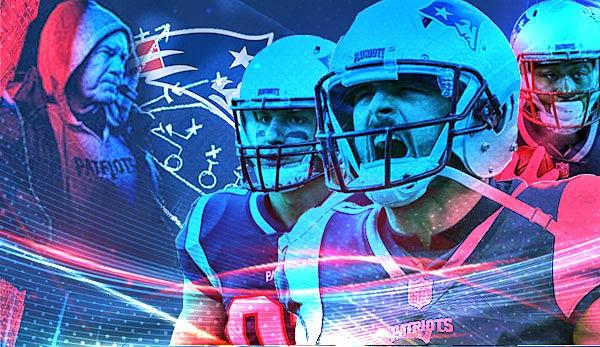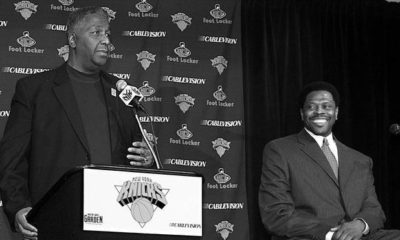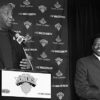US-Sport
NFL: Patriots analysis: Tom Brady’s well-oiled machine
The offense of the New England Patriots has been at the top of the league for years – although it continues to evolve. How is that possible? What distinguishes the Patriots-Offense and especially this year’s version? SPOX looks at Tom Brady and Co. and highlights the strengths – as well as some possible starting points in the Super Bowl for the Philadelphia Eagles. Super Bowl LII will be available on 4. February from 11.45 pm live on DAZN – optionally with German and original US commentary!
New England’s offense is complicated. A hybrid of different systems. Very complex. But if you have the players who can do it well, it’s the best system,”said Brian Hoyer – currently in his second term as patriot backup quarterback, a while ago.
Ex-patriots tacklele Sebastian Vollmer told SPOX before the last Super Bowl:”What you hear about other players coming from other teams is that the offense is somehow different, for example in terms of terminology. Add the Routes option. For this, the receiver and quarterback must be fully on the same wavelength. It can be complicated.”
Complex, complex, difficult – anyone who deals with the NFL for a while will sooner or later pick up these attributes around the Patriots Offense. No team today simply leaves an open style to play – like the West Coast Offense, which made the San Francisco 49ers famous in the era of Bill Walsh, Joe Montana and Jerry Rice. Each team uses a hybrid, the Philadelphia Eagles with their mixture of West Coast and Option Offense are no exception.
The Patriots are the most extreme team here, and this is a fundamental reason why New England has repeatedly dominated in tight games and over the years has been able to move from a downfield opener with Randy Moss to the 2-tight-end offensive with Gronkowski and Hernandez, among others, to the slot short pass offensive with Gronk and Edelman and the Mixt.
Two pillars are central to this: on the one hand, the individual class of Tom Brady – and on the other hand, the qualities of the offensive scheme. New England’s Offense is based on the Erhardt-Perkins system, which mainly relies on flexibility and different combinations of routes instead of individual itineraries or specific routes.
The first is what quickly catches your eye when you look at patriot games. To put it simply, New England plays the same formations with arbitrary groups of players. Thus, four wide receivers and a tight end can be set up in the same way and perform the same move as two receivers, a tight end, a running back and a fullback – just to name one of the countless combination possibilities.
This is the first major schematic challenge facing defenses against the patriots. On the one hand, you have to be able to keep abreast of the various personnel groupings in combination with pre-snap motion. On the other hand, you also have to know how to find the right matchups, often from a no-huddle approach – without the possibility to replace a linebacker with a cornerback or something like that.
This already leads to many of the individual mismatches that New England creates and pushes better than any other team over and over again. In addition, certain route combinations in the Erhardt-Perkins system – for example, the route of the slot and outside-receiver on the left-hand side – have individual names. So if Brady in the Huddle says something like “72 Ghost/Tosser” besides the protection phrase, then the receivers know on the one hand which side they have to line up on and on the other hand which side they have to line up on. This also makes line of scratch image conversions much more efficient.
The consequence of all this is that the quarterback receives different formations and reactions from the Defense before the snap – without having to make any changes to its reads. The patriots can run the same placements with different personnel and different types of placements from the same personnel. This makes the offense as complex as it is for your own players, but also so deadly for defenses, especially from the no-huddle approach.
The route combinations used by New England are fully adapted to their own personnel and are not in any way strictly marked. This has enabled the strong changes of the past years and gives the Patriots-Offense a new face and New England is very good at catching Defenses on the wrong foot with supposedly identical placements.
In addition to all these aspects, there is the Routes option. Here the coordination between the quarterback and the wide receivers is elementary, which makes the offense for new receivers so challenging. Especially in the middle of the field New England uses this means, the receiver decides his route while he runs depending on how the defense reacts, in which direction he runs at a certain point.
If one compares this year’s Offense with the last year’s edition, one element stands out above all else: the downfield passing game is much more present. The trade for Brandin Cooks in combination with Julian Edelman’s cruciate ligament rupture in the preseason has not failed to have an effect here.
The Pats recorded 7.9 yards per pass in the regular season (ranked third behind the Saints and the Chiefs), Brady’s passes averaged 9.4 Intended Air Yards (how far he threw the ball on average), which was ranked seventh among quarterbacks with at least 250 passes – ahead of Matt Ryan (9 IAY), Cam Newton (8.8), Tyrod Taylor.
With an average of 2.7 seconds between snap and throw, Brady also moved in other spheres than in previous years. For comparison: Quarterbacks like Alex Smith (2.67), Matthew Stafford (2.65), Drew Brees (2.58) or Ben Roethlisberger (2.56) got the ball away much faster. Brady was by far the best quarterback in the league against pressure and remained comparatively accurate despite the increased number of long passes.
The play designs are remarkably often designed to put the cooks in one-on-one situations – and the fast receiver capitalizes on this. One example is the Big Play to Cooks in the game against the jets: Via Pre-Snap-Motion Brady recognizes that it is supposed to be Cover-3. In doing so, he knows that he can give Cooks an advantageous matchup by letting the Underneath route and the opposite outside-route delay the deep safety. The result is a long completion.
But in addition to the long passes, the opposite has taken over a central position: the role of running backs.
Page 1: The Scheme Peculiarities and the Patriots’ Downfield Pass Game
Page 2: The Role of Running Backs and Matchups against Philly


















You must be logged in to post a comment Login